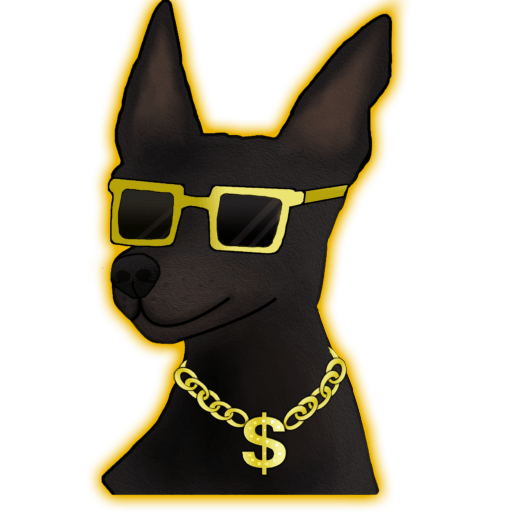Every dog owner makes mistakes.
Maybe you accidentally raise your voice a little too much.
Maybe you give your pup too many treats one day.
Or maybe you give into her cute puppy dog eyes.
In any case, owning a new dog is a learning curve. Whether you have a puppy or full adult, here are the most common mistakes new dog owners make.
10 Mistakes New Dog Owners Make
We bet you can relate to a few points on this list of mistakes new dog owners make. Read on to discover how to correct them.
#1 Using Words Instead of Gestures
Of course, dog’s don’t know language… or at least, not yet. When you’re training your puppy on something new, try to use hand gestures alongside words. For example, just saying “lay down” is harder for a pup to remember. Picking a hand signal to go along with it will be easier for them to recall. You can make dog training easier and quicker by pairing every command with a gesture.
#2 Putting Off Training
You should start training your dog as soon as you get her. It’s easier to train dogs as puppies before their bad habits have been set in. Even if you get your dog as an adult, train her right away so she knows how to behave in her new environment.
Before getting a dog, make sure it’s a time in your life where you can set aside time to properly train her. This includes the basic commands as well as potty training and socializing. Your dog should be exposed and desensitized to noises, children and other animals. The sooner this happens, the more likely you are to be successful at it.
#3 Not Being Consistent
“Puppy dog eyes” is a phrase for a reason: they can be hard to say no to. And when your dog does something bad, it can be easy to look over it and continue to delay training.
It’s important to be consistent in your training. For example, if your dog jumps up at people, letting it go just these couple of times helps reinforce a bad habit. Instead, take time the time to say the commands and teach your dog in the moment. If you live with others, be sure they’re clear on the rules too so your dog isn’t confused.
#4 Too Many Treats
Your dog is going to hate me for this one. But it’s true. Often, when we get a new puppy we’re so excited that we buy tons of treats. We then proceed to feed them a ton of each variety. The bad news is that they can add up quickly—especially for a small pup! Try to keep treat feeding to a limit.
#5 Buying Only The Finest Things
Look, your dog isn’t going to know whether his brush costs $5 or $70. Really.
There’s some things you should spend the extra dollar on because it usually means higher quality, like dog food or tough dog toys. But there’s many high-priced dog items that your pup just doesn’t care about, so save your money. For example, if your dog doesn’t chew apart toys easily, you don’t need to spend $30 on a tough Kong toy. Or, a $20 dog bed will be just as comfortable as a $100 one.
#6 Getting Frustrated
Let’s admit it, your puppy is the cutest thing the world but he can be pretty frustrating. Whether he’s acting up, not listening, not learning commands or fussing when you try to clip his nails—the list of time you could lose patience is endless.
As much as you want to yell, remember that’s not the right thing to do. In fact, even being internally upset is something dogs can sense. Remaining calm is best because your dog will pick up on the calm energy. For example, let’s say your dog keeps moving and doesn’t want his nails clipped. You know you need to get it done and you’re getting frustrated. Your dog is picking up on this and is likely to have even more anxiety. Instead, let your dog go for a moment and take a break. Take a few deep breaths and calm down your energy before returning to nail clipping. You’ll probably notice that your dog is also calmer.
If you don’t believe in the “Woo-Woo” of this, consider this: your dog can feel your heart beating. If it’s too rapid, he knows your nervous or upset, which makes him act differently too.
#7 Not Puppy Proofing Your Home
If you get your dog as a puppy, consider it like having a toddler: Safety and hazard proof your home. Puppies are curious creatures and they can find things you didn’t even know you had. And they love to bite things too. To prevent anything bad from happening, clear the area (especially the floors and low, open shelves).
#8 Going to the Vet Too Little or Too Much
Many people think dog’s don’t need to go to the vet. However, as puppies, they should always have a first visit to the vet to make sure everything is ok and to get their shots.
The second mistake is becoming over paranoid about your dog and going to the vet for every little non-issue. Although you mean well, you could end up in debt from thousands of dollars in vet bills that were easily preventable. Of course, if there is an issue, you should go to the vet. However, many times the bill can be avoided by simply calling your vet, telling them the issue and asking for advice. For example, if your dog as worms in his poop, the vet may recommend an over-the-counter medication instead of going in for an expensive visit.
If you’re unsure of the issue and it’s not an emergency, you can always research it first and ask experts for free. There’s groups on Facebook where you can post your question and only real vets can comment. You can check out Ask A Veterinarian or Pet Vet Corner.
#9 Not Reading Cues
Just like babies, dogs have certain cues that signal what they need. Although it can be different for different dogs, some are the same. For example, when my dog has to poop, he paces back and forth and gets his sniff on. I know that’s when he needs to be taken out. Similarly, waiting by the door could mean he has to pee.
Other things, like being overly annoying, usually means that your pup has too much energy and she need to burn some off—so she’ll need more exercise or play time. Another one: Repeat licking of their lips could mean their nervous because they know or think they’re in trouble. Get to know your dog’s cues and follow them.
#10 Listening to Everyone’s Advice
When you get a dog, tons of people will probably give you advice. Some good, some bad. But something to realize is that you don’t need to take all the advice you get.
For example, a friend may tell you that’s it’s ok to feed your dog junk because she does, and her dog is okay. Another friend may tell you that feeding your dog anything other than a raw meat diet is just cruel. Before listening to someone, do your own research. In some cases, ask your vet for recommendations.
Summary of Mistakes New Dog Owners Make
Every dog owner, even seasoned ones, make mistakes with puppies. Just like parents, we learn how to better act with our canines with each passing day. This list includes the major mistakes new dog owners make and how you can fix them. Remember though: Don’t be too hard on yourself! Having some self-compassion can go a long way in the training puppy process.









